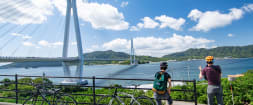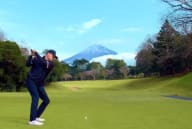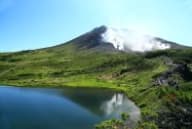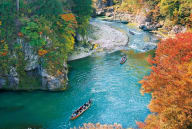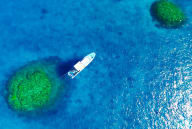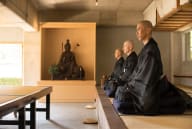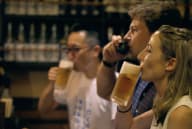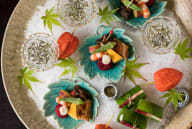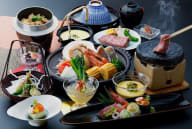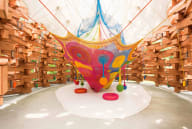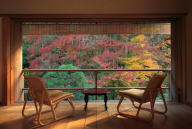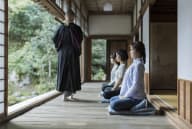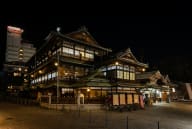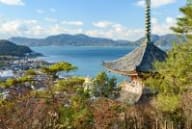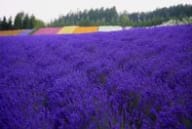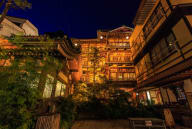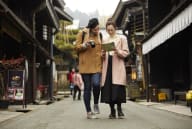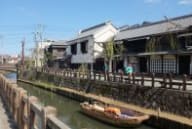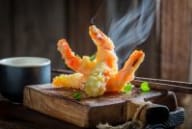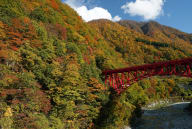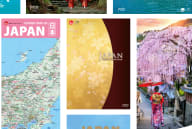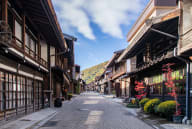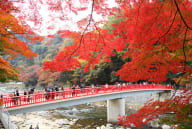
Shiga Dive into Biwa’s best, savour the lake’s luscious legacy
A Culinary Journey in Shiga
Shiga Prefecture, nestled in the heart of Kansai region, is celebrated for its serene landscapes, cultural heritage, and distinctive culinary traditions. Located northeast of Kyoto, Shiga offers a captivating blend of historical sites, picturesque lakes, and a rich culinary heritage rooted in its natural bounty.
Shiga is renowned for its diverse agricultural produce, forestry products, and freshwater fish. The fertile plains and hills yield an array of crops, including rice, vegetables, and fruits. Lake Biwa provides an abundant supply of freshwater fish, including Funa (carp) and Ayu (sweetfish), which are integral to the local cuisine. Shiga's culinary scene features regional specialties like Funazushi, a type of fermented sushi made with carp, and Omi beef, one of Japan's top brands of Wagyu beef, celebrated for its marbled texture and rich flavour.
Whether exploring the historic Hikone Castle or enjoying a meal at a lakeside restaurant, Shiga invites you to immerse yourself in its culinary landscape. Shiga's culinary diversity showcases a balance of tradition, innovation, and plentiful natural treasures.
Savour the tastes of Shiga and let each dish tell a story of its rich cultural heritage and vibrant food scene.
Omi beef

What it is (ingredients)
Omi beef is a renowned variety of Wagyu beef known for its exceptional marbling, tenderness, and rich flavour. Raised in Shiga, Omi beef cattle are fed a carefully controlled diet that enhances the quality and flavour of the meat. The beef is characterized by its fine, intricate marbling of fat throughout the muscle fibres, giving it a buttery texture and exquisite taste.
History/Origin
Omi beef traces its origins back over 400 years, originally being prized as a luxury food enjoyed by nobles and samurai – giving it perhaps the longest history out of all the Wagyu beef varieties. Shiga’s lush pastures and pristine water sources contribute to the superior quality and flavour of Omi beef, making it one of Japan's most esteemed Wagyu varieties.
Where to Eat
Omi beef can be found at Shiga’s upscale restaurants, and specialty Yakiniku (Japanese BBQ) restaurants. These venues offer diners the opportunity to savour Omi beef in various forms, from grilled steaks to sukiyaki and shabu-shabu preparations.
When to Eat
Omi beef is best enjoyed year-round, although It is said that the best season for beef is during the bitterly cold winter. As winter approaches, cows accumulate fat to protect themselves from the cold, resulting in high-quality marbling and beef with exceptional fat content. Omi beef is often savoured during special occasions and celebrations due to its premium status and exquisite taste.
Treat yourself to the unparalleled taste of Omi beef and discover Japan's finest Wagyu delicacies, embodying centuries of tradition and artisanal craftsmanship.
Funazushi (Fermented crucian carp sushi)

What it is (ingredients)
Funazushi is a traditional Japanese dish made from Nigorobuna - a type of crucian carp, that has been salted and fermented with rice. The fish is first gutted and cleaned, then packed with salt and allowed to ferment for several months. After this initial fermentation, it is packed with rice and left to ferment for an additional year or more, resulting in a unique, salty flavour and a distinct, creamy texture.
History/Origin
Funazushi, considered one of Japan's oldest forms of sushi, originated in Shiga and dates back to Japan’s Nara period (710 – 794), over a millennium ago. This ancient method of fermentation was developed as a way to preserve fish before the advent of refrigeration, and it remains a testament to the ingenuity and culinary artistry of Japan's past.
Where to Eat
Funazushi can be found at traditional restaurants specializing in regional and historical Japanese cuisine, as well as at some supermarkets in Saga.
When to Eat
Funazushi is made by pickling Nigorobuna fish harvested from Lake Biwa in the spring, fermenting it with rice during the summer, and enjoying it from November to March. Funazushi is typically served as a special treat as part of a traditional multi-course meal known as kaiseki. Its strong flavour can be polarizing - making a dish best enjoyed by locals, adventurous eaters, and connoisseurs of traditional Japanese cuisine.
Experience the deep, historical flavours of Funazushi and savour a piece of Japan's culinary heritage, preserved by locals for centuries.
Decchi-yokan (Red bean confectionary)

What it is (ingredients)
Decchi-yokan is a traditional Japanese confectionery made primarily from sweetened red bean paste (Anko) which is mixed with flour and then steamed, in order to achieve a smooth and slightly chewy texture.
In the Shigaraki area, agar is used instead of flour, giving it a soft texture. Decchi-yokan is characterized by being wrapped in bamboo skin, adding a subtle bamboo scent that enhances its elegance.
History/Origin
Decchi-yokan originated in Saga, where a merchant family selling red beans and sugar began making steamed yokan by wrapping the bean paste in bamboo skin, which was readily available thanks to area’s thriving bamboo industry. Initially prepared for their neighbourhood, it gained popularity for its delicious flavour and has since become a renowned specialty of Saga.
Where to Eat
Decchi-yokan can be found at specialty shops and traditional Japanese confectionary shops (Wagashiya) throughout Saga prefecture.
When to Eat
Decchi-yokan is enjoyed year-round. It is popular as a souvenir from Shiga, but please note that it usually has an expiry date of around 7 days.
Experience the timeless elegance of Decchi-yokan and indulge in Saga's rich confectionery heritage.














